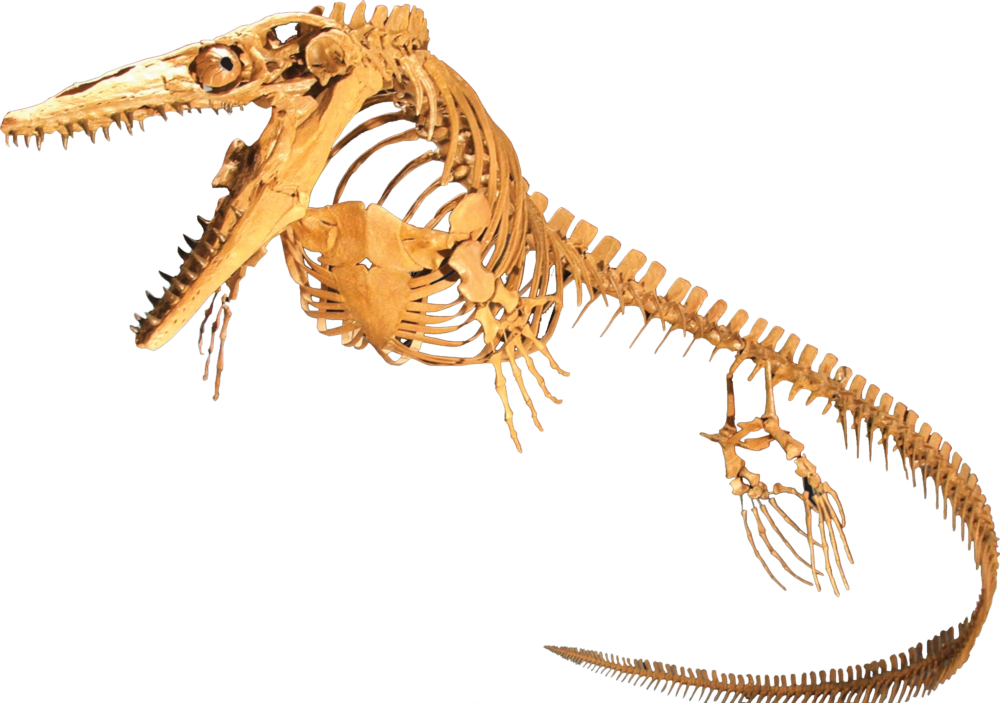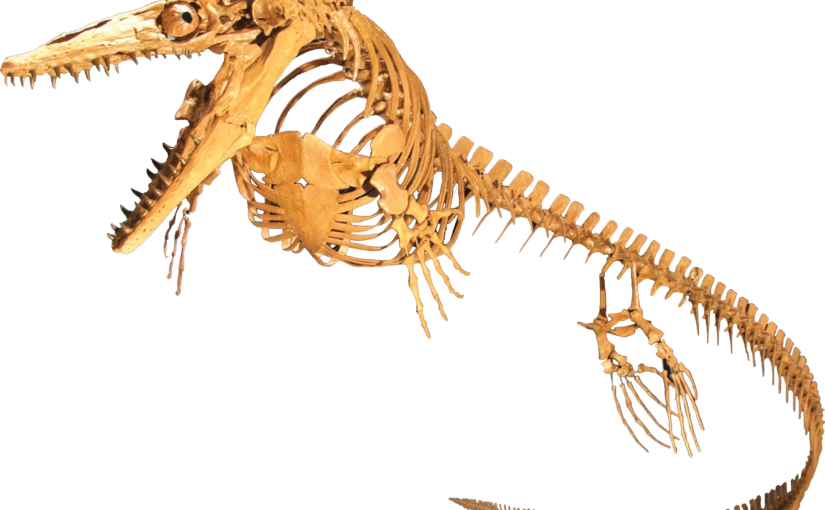
Fossil of the mosasaur were found in the Pembina Gorge.
North Dakota Geological Survey gave the public opportunities to play paleontologist throughout the summer.
On their most recent dig on Aug. 17 in the Pembina Gorge, Becky Barnes, paleontologist with the NDGS and graduate of North Dakota State, found the jaw bone of a prehistoric sea monster: the mosasaurs.
The mighty mosasaurs looked like something out of a nightmare; growing to around 4-meters (13-feet) long, possessing a large head with a jaw lined with razor-sharp teeth and four fins attached to an eel-like body.
The fossil was found in the Pembina Gorge, which is in northeastern North Dakota and covers roughly 12,500 acres of unaltered river valley that ultimately stretches into Canada.
“Exposures in the Pembina River Gorge reveal shale that is interbedded in places with layers of yellowish-colored bentonitic clay,” John P. Bluemle wrote in “North Dakota’s Geologic Legacy.”
Bluemle worked for the NDGS from 1962 to 2004 and field mapped 23 of North Dakota’s 53 counties, including Cavalier county where the Pembina Gorge is located.
These exposures are where most of the fossil digs take place.
This predator could have been found in the Western Interior Seaway during the cretaceous era, Allan Ashworth, president of the International Union for Quaternary Research and distinguished professor emeritus at NDSU, said.
The cretaceous era began 140 million years ago and ended 60 million years ago. Barnes’ mosasaurs is estimated to be 80 million years old.
The Western Interior Seaway connected the Gulf of Mexico to the Arctic Ocean. Western North Dakota marked the western shoreline, and central Minnesota marked the eastern shoreline.
On average, the Western Interior Seaway was hundreds of feet deep and bountiful with aquatic life. The sea was, “warm and tropical…organic rich and almost swampy,” associate professor of geology Bernhardt Saini-Eidukat said.
Other notable creatures that would’ve lived in the sea included vertebrates like the archelon, a massive sea turtle that stretched from floor to ceiling in an office building, and xiphactinus, one of the largest bony fish of the cretaceous, Ashworth said with sheer enthusiasm.
The most common fossil that would be found in the area is of an invertebrate called an ammonite. Ashworth said, “they were early ancestors of squid,” and has one perched on a shelf in his office.
Ammonite fossils are spiral in shape.
NDGS will be hosting further public digs in 2018 that are scheduled in December and January with excursions taking place from June through the middle of August.
Public digs take place across the state of North Dakota, including sites in the Dickinson Area, Bismarck Area and Medora.
Digs are free, but require a $10 refundable deposit to hold a spot. All digs include complimentary tools, and it is advised to pack a water bottle and wear hiking boots.
For more information about upcoming digs, visit NDGS’s website at www.dmr.nd.gov or their Facebook page.
Note: if interested in digging for fossils, remember that it is more than likely you find fossilized plants and smaller animals than dinosaur and larger sea creature bones.
